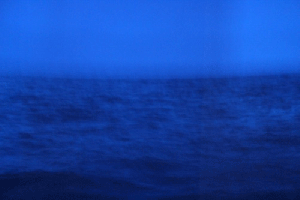Venice -the city of Art- with its well renowned biennial, is one of the most coveted global exposures for countries and artists alike
Several centuries ago, Veneti people exploited the marshy lagoon to –literally- find their land and create their city on water, and ever since water became a comfortable reality for Venetians. Houses, markets, daily life events are all well acclimatized to the water and the canals that spread all over the archipelagic city.
When it comes to Art and artistic production, water also inspired many artists with the magnificent Vedute of Venice and the beautiful Ca’s that became a recurring motif in works of prominent artists such as Canaletto among others, the canals also add a lot to the romantic scenes of the city with the famous Gondola excursions making it one of the preferred destinations for tourists.
For Venetians water is a Romantic reality and a daily ritual, or even their second nature !
Few thousand miles away, and despite the geographical similarity between Venice, Abu Dhabi and Dubai – since they are all formed of clusters of natural and/or man-made islands more or less- for the Emirati artist Mohammed Kazem it’s evident that the notion of water has a different sensitivity formed through one of his childhood experiences; when he had fell –unnoticed- of the boat and was lost at the open sea for around half an hour before he was relocated and saved by his friends.
Kazem’s “walking on water” brings a different perception to the daily Venetian habit of “walking” on water, a mildly disturbing one though !
We need to keep in mind here what the French artist George Braque once said: “The function of Art is to disturb… Science reassures.” Consequently we can deduct that the importance of Mohammed Kazem’s work derives exactly from its capacity to challenge the visitors’ comfortable perceptions of the water and introduce them to a new unsettling consciousness provoked by the artist, simultaneously the work is suggesting a new understanding and a new meaning to the modern notion of Global Positioning System coordinates.
“Walking on water” is part of Kazem’s series of conceptual art called: “Directions” which he started in 1999. By using GPS coordinates to document his location he endeavors to symbolically reference his very existence, he also tries to give a new meaning to the figures of the coordinates; (e.g. 25” 14.08 N / 055” 14,30 E / 0 Ft) might have no functional value except in the exact geographic spot where they were captured merely indicating a location on earth, But at the same time they bare an inner-story of that location and this is what gives them a meaning and a big Importance anywhere they traveled in the world.
With the simulator installation of “Walking on water” Mohammed Kazem attained a big success; he transmitted his personal experience through a 360 degree video projection, developed it into an artistic message, and put it on a global outreach… Kazem succeeded in actually realizing what the French artist Edgar Degas once said “Art is not what you see, but what you make others see”, and “others” here is not limited to Venetians, but it include the whole international publics visiting the biennial.
As illustrated before, the concept -which the solo artwork in the National pavilion of UAE stands for- is an interesting and smart juxtapose to one of the distinguished marks of Venice.
However examining this work along with the overall theme of the Biennale suggested by the curator Massimilano Gioni -revolving around the 1955 Marino Auriti’s design of a “Pallazo Enciclopedico”; an archive museum to document all knowledge and evolution of humanity and societies-… we can notice a diversion in the curatorial approach, which In my humble opinion is due to 2 main points:
– First: the concept of archiving of the past achievements of a nation, or its prominent landmarks, or the current traits of its modern society is not clearly evident through this type of conceptual artworks.
– Second: the context of water –even with its interesting critical approach- is not exactly specific to the United Arab Emirates, as it can be a tale from any country with and stretch of a coastline or even without coastlines.
Eventually I would like to say that this diversion in approach does not derogate at all of the value of Mohammed Kazem work and artistic message, nor of the curatorial efforts of Reem Fadda… it is just a different way to plot the United Arab Emirates participation in the 55th Biennial of Venice 2013 – 2014

